by Marley Heltai // Apr. 23, 2024
This article is part of our feature topic Grief.
On the dimly-lit top floor of Fotografiska Berlin, where Shirin Neshat’s recent exhibition ‘The Fury’ is currently on view, striking examples of her distinctive photographic approach—large-scale black and white photographs of naked forms—confront visitors with the raw vulnerability of the female body. A two-channel video projection immerses us in the harrowing experiences of a female political prisoner and is juxtaposed by a flashmob-style dance scene, with dancers screaming and smashing car windows in a final act of catharsis.
The portrayal of suffering and trauma is a contentious topic for artists to navigate, striking a delicate balance between explicit representation and complete avoidance. Neshat, a New York-based Iranian artist, navigates this terrain with grace and honesty, confronting social issues created by religious and political institutions. Her work delves into the profound implications of these forces on women’s bodies, particularly within the context of Iran and the Middle East. In our conversation, Neshat shared insights into her artistic process, illuminating how she navigates themes of mourning and grief when depicting this kind of sensitive subject matter. Central to her practice is the nuanced depiction of resistance and resilience. With a dualistic approach, acknowledging the female body as both an unwitting home to trauma and a symbol of defiance, Neshat’s work serves as an exploration of the multi-voiced nature of human suffering.
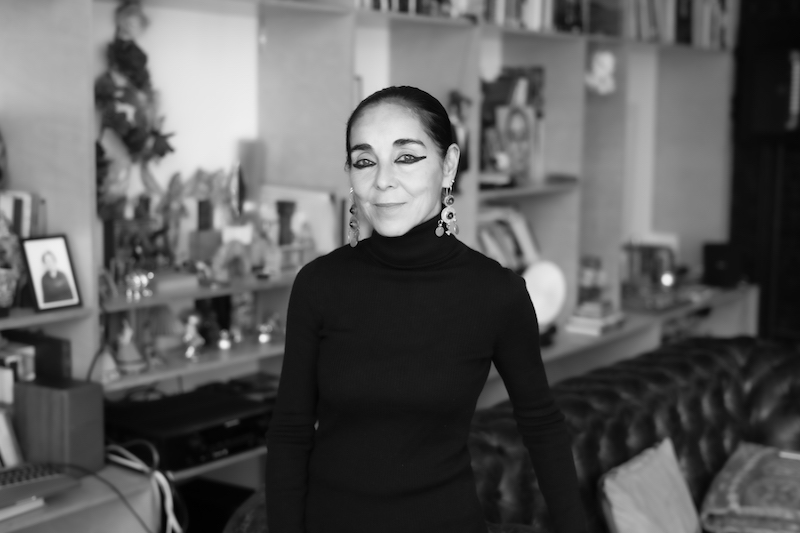
Shirin Neshat, portrait // Photo by Cheryl Dunn
Marley Heltai: Your exhibition, ‘The Fury,’ explores the nuanced complexities surrounding the sexual exploitation of female political prisoners in Iran. What inspired you to explore this particular subject matter, and how do you hope your artwork sheds light on these issues?
Shirin Neshat: Ever since I started as an artist, I’ve had an obsession with exploring women, particularly women from my part of the world, and how their bodies are subject to men exercising their political ideologies and religious values. In a way, the woman becomes the identity of the men’s values or rhetoric. While that reality has been resisted for so many years, particularly in my country Iran, I never really dealt with the female body in relation to sexual abuse or sexual exploitation. We are always told that the female body is what provokes and creates temptation for the opposite sex and so we have to cover ourselves and be concealed. It has always been a very interesting subject for me how it is made to be the woman’s problem that men cannot control their sexuality. But, more so, at time of war and any political upheavals, sexual violence and exploitation are among the first things that occur. Women get raped and exploited across the world. I was also really struck by the long history of women’s sexual abuse in Iranian prisons. Eventually with the “Woman, Life, Freedom” movement, which began in 2022, we saw that almost immediately after being arrested for protesting, many women were sexually exploited. It really goes back to the issue of the female body being both an object of desire and of violence, and how women navigate this issue to different degrees and in different corners of the world.
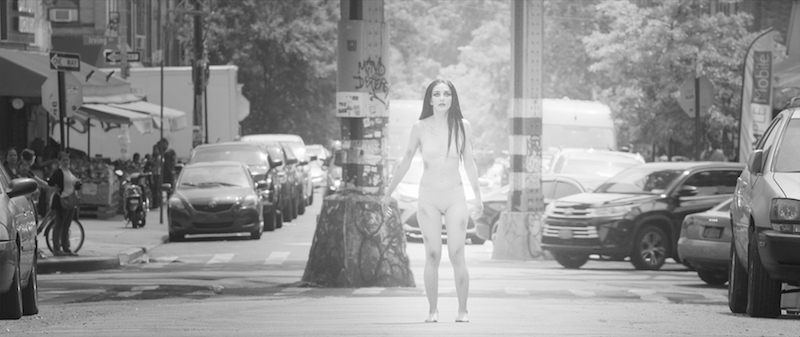
Shirin Neshat: ‘The Fury,’ 2023, video still // Copyright Shirin Neshat, courtesy of the artist, Gladstone Gallery and Goodman Gallery
MH: As an artist, the way in which you confront the female body really captures its intersection between resilience and vulnerability. How does your work depict the experience of trauma and grief within the context of the female body and female political imprisonment?
SN: As women, we are very conscious of the sense of desire that we can create through our beauty. Yet, at the same time, I think, for the majority of women, the fact that we also become this place of trauma and pain is something we don’t really want. We are born into a body that is a provoker of both tendencies in men; to have the ability to attract men, but also equally to attract violence. The photographs and the video show the body of a woman, both as a place of beauty and desire and of pain and suffering.
In contrast, in the photographs, there are subjects that look very defiant and full of dignity and confidence about their body, regardless of size or age. And yet, there are also images that are very harsh and very brutalized. I wanted to leave the audience with the vision of how women have always been throughout generations across the whole world.
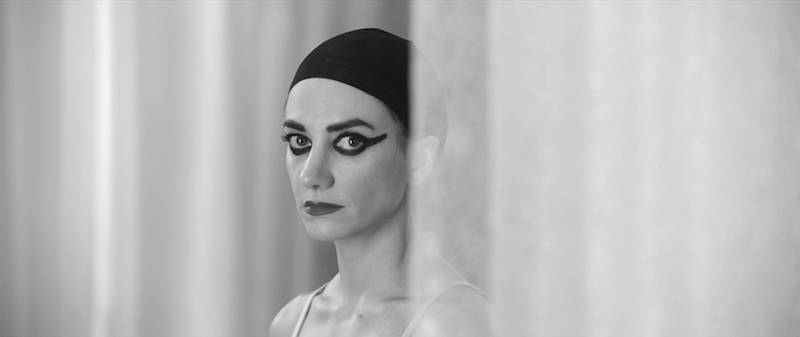
Shirin Neshat: ‘The Fury,’ 2023, video still // Copyright Shirin Neshat, courtesy of the artist, Gladstone Gallery and Goodman Gallery
MH: It is indeed a double-edged sword to live in a woman’s body in a patriarchal world. The video installation you mentioned portrays the highly-stylized and fictionalized representation of sexual assault endured by female political prisoners. Can you discuss the creative process behind this short film and any challenges you faced in depicting such sensitive subject matter?
SN: I always think that a lot has to be left for audience interpretation. Even though I start with a very specific theme, the way in which I create the videos is quite enigmatic. Especially with a double channel projection, the audience really has to use their imagination to make sense of the narrative. I think more like a poet than someone who’s writing a novel and I think that idea of abstraction and enigma is very helpful because it allows each person to have their own perception.
It’s quite an abstract work, but I was really impressed by how, within this abstraction, people really understood and related to the ideas, regardless of where they come from or who they are. I often just trust myself in my creative process in terms of allowing a lot of enigma. It’s a little bit like magic realism because I do like the idea of surrealism and the idea of making work that doesn’t immediately make sense. Also there’s the part where you see her standing there in the street, and everyone’s looking at her, and then slowly, they join in and are screaming with her. There was this really beautiful element of catharsis in it. I just had to be careful about how to set up something so surreal and make sure I didn’t land in pure realism, so dance seemed like the best way to explore that.
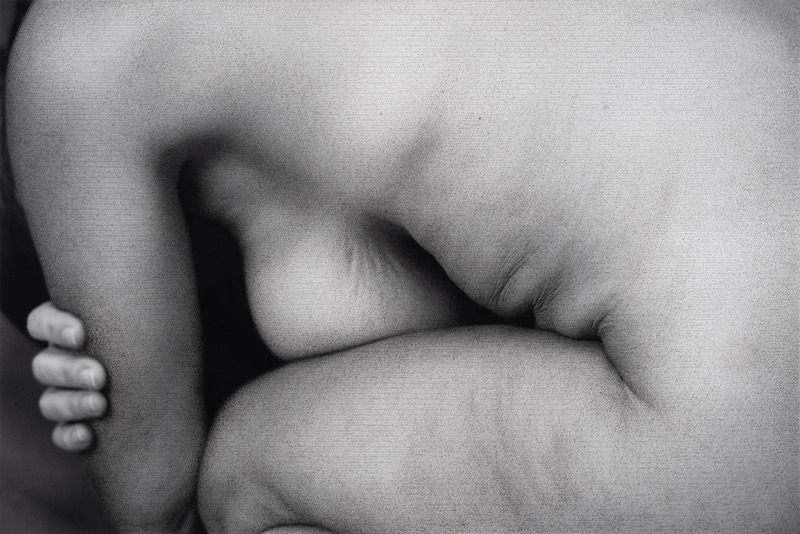
Shirin Neshat: ‘Ana,’ from ‘The Fury’ series, 2023, digital c-print with ink // Copyright Shirin Neshat, courtesy of the artist and Gladstone Gallery, New York and Brussels
MH: Your work focuses on the resilience of human nature and of women in general. You’re dealing with a lot of really heavy, sensitive subject matter that can be really painful, but there’s always kind of this underlying sense of joy and humanity. How do you address the nuance and complexity of mourning and healing within your work?
SN: I think you put your finger on it, because everything I make is about creating this sense of duality and contradiction; acknowledging the repression and the traumas that we experience but also how we cope with our fears, anxieties and devastations. For me, everything is about creating a framework where you see the dark side of being human and all that it embodies, versus the strength, the resilience, the beauty, the poetics of being human. I think keeping an eye on what’s really disturbing is often what the work is about. It’s very violent, extremely painful and at times morbid. But for me I always, always, always see the light at the end of the tunnel and the more positive energy that anyone can find within themselves, in both a symbolic and a literal sense. To see within myself all the good and the bad is something I’m battling with as a human being. It’s manifested in the way I see the world. It’s a full paradox. I never see anything as a whole, as one. Therefore, within the work is always embedded these kinds of contradictions, dualities, the madness versus this sanity, illusion versus reality, magic, realism, because that’s how I see everything.
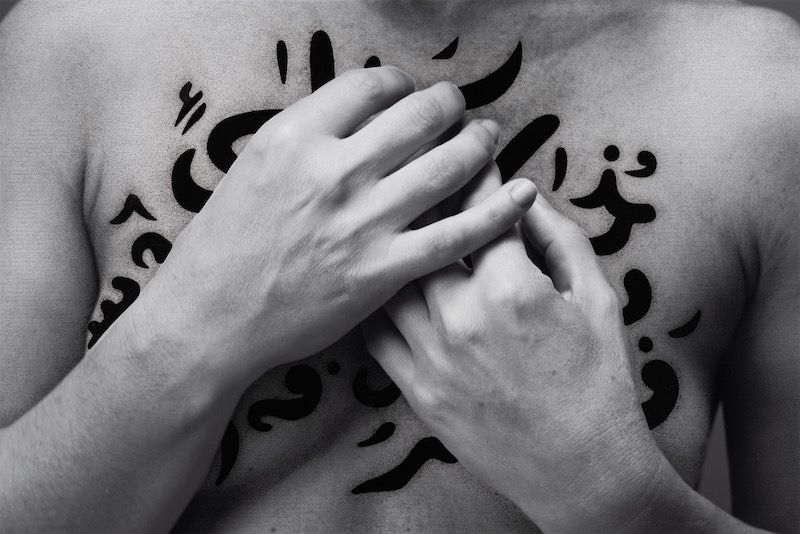
Shirin Neshat: ‘Flavia,’ from ‘The Fury’ series, 2023, digital c-print with ink // Copyright Shirin Neshat, courtesy of the artist and Gladstone Gallery, New York and Brussels
MH: ‘The Fury’ unfolds against the backdrop of the Spring of 2022, predating the “Woman, Life, Freedom” Revolution. In what ways do you see the narratives and themes of the exhibition resonating with current socio political events, both in Iran and globally, and what role do you believe art plays in addressing and challenging such issues?
SN: I think that ‘The Fury’ like everything else I make, is always meant to be very symbolic. The symbolic sense of resilience, defiance, confrontation and protest are all present within my work. I also like to explore womens’ lack of fear, although at the same time, they’re always against the wall and Iran is one of the countries where the women are most against the wall. But they were the most furious and the most resilient, expressive protesters against the regime. The more you press any human being against the wall, the more likely that they revolt. And I think that kind of intensity and provocation urges other people to come to their support. I always say that art cannot stop a war or stop genocide or atrocities but it really can inspire and encourage people to change and to think about the power they hold as citizens of the world. We all hold so much strength and power both as individuals and collectively. From the beginning, my work has been about this lack of balance between those in power and those who are powerless as well as the oppression caused by some religious or political powers. And yet, there are always people fighting against the systems of oppression, so in some ways, the work acknowledges that but overall it really supports the idea that we’re not losers no matter our circumstances. There’s still always a chance to be victorious and to see some change.
Exhibition Info
Fotografiska Berlin
Shirin Neshat: ‘The Fury’
Exhibition: Mar. 8–June 9, 2024
berlin.fotografiska.com
Oranienburger Straße 54, 10117 Berlin, click here for map























